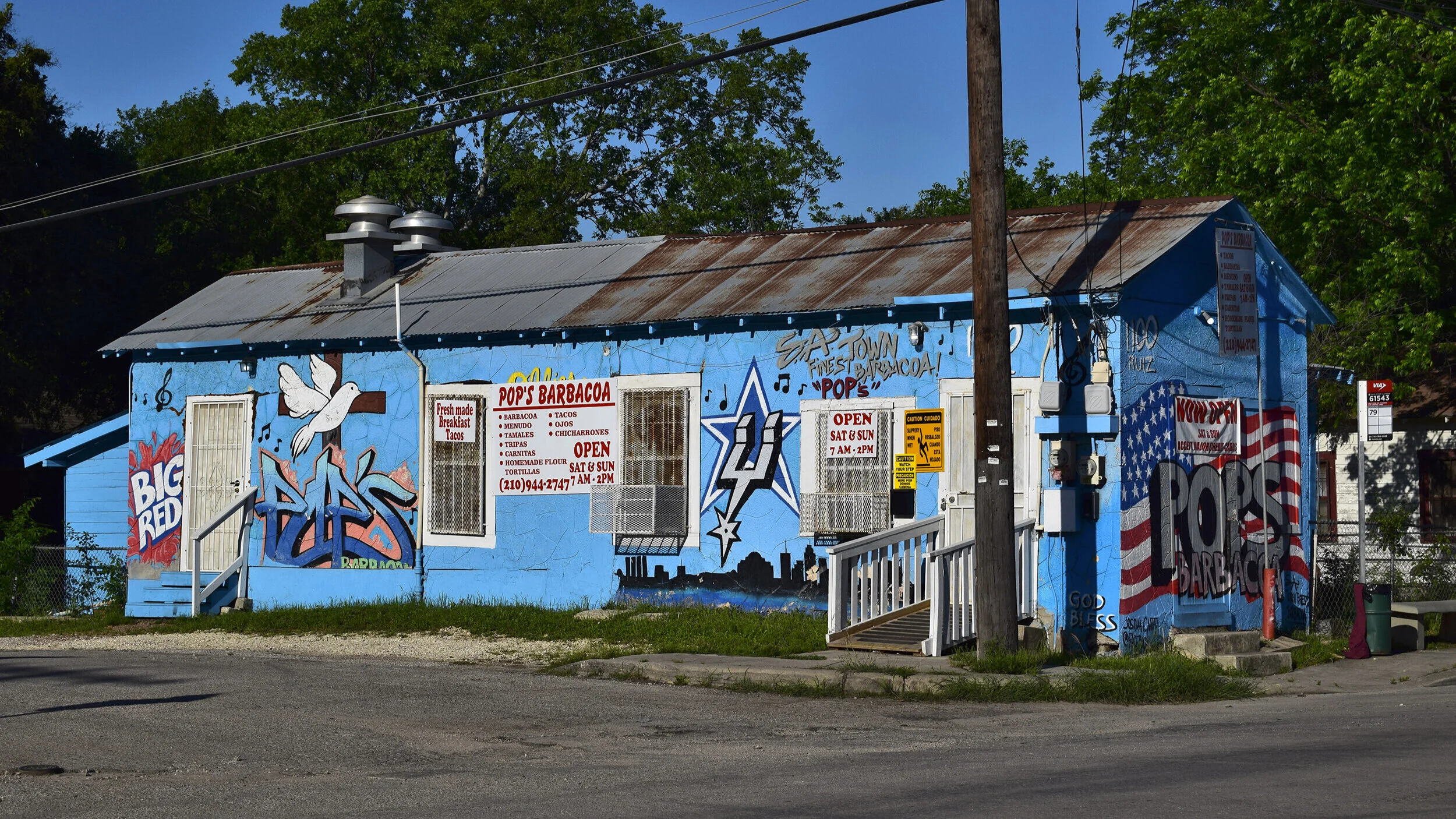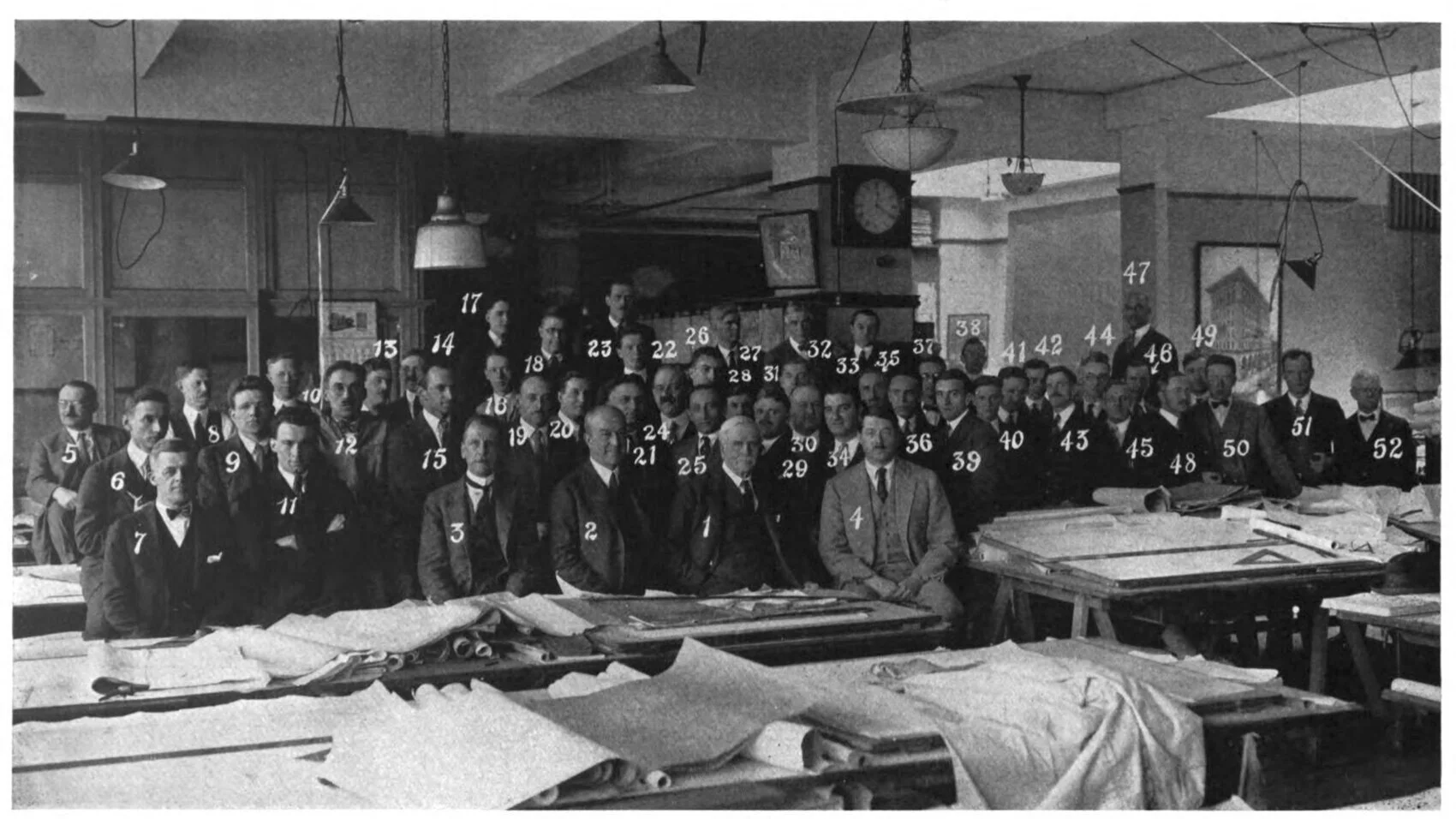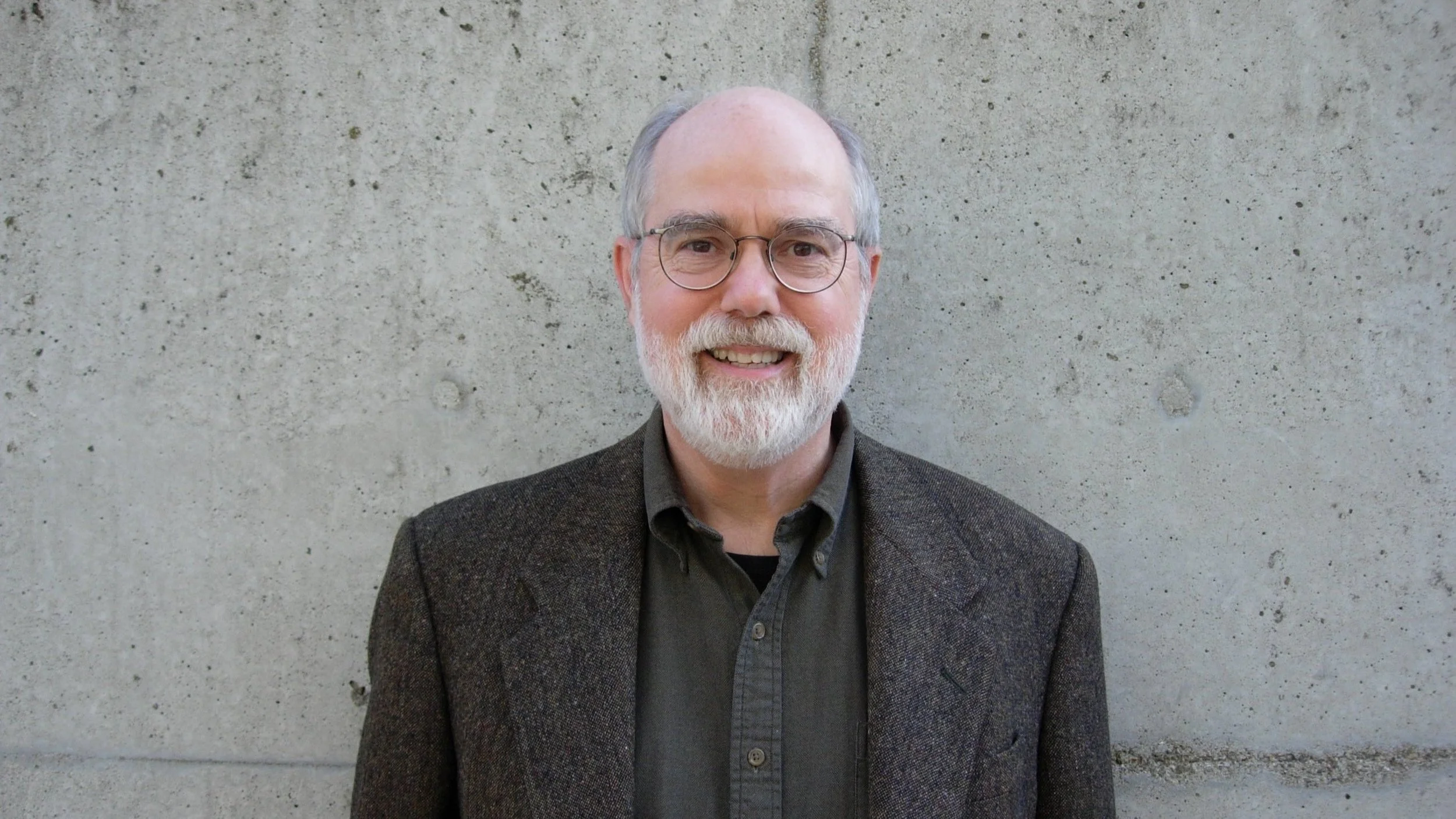On Rasquachismo
In 1989, Tomás Ybarra-Frausto, a scholar of Mexican and Latino art and culture, offered a theory of working-class Chicano culture known as “rasquachismo.” Ybarra-Frausto defined rasquachismo as a “sensibility” and “neither an idea nor a style but more of an attitude or a taste.”[1]
Having participated in, and chronicled, the Chicano movement since the 1960s (I use “Chicano,” following Ybarra-Frausto), and influenced by Susan Sontag’s writings on camp, Ybarra-Frausto turned a discerning eye on the forms and imagery of Chicano literature, theater, consumer culture, neighborhoods, and self-presentation.[2] In his essay, Ybarra-Frausto named the specific elements and impulses that define what he called rasquachismo’s “underdog perspective,” as an “attitude rooted in resourcefulness and adaptability yet mindful of stance and style.”[3]
Rasquachismo manifested, he argued, in vernacular residential spaces through an accretion of symbolic objects and as evidence of the persistent need to make do with “limited resources,” which manifests in “mending, re-fixing and reusing everything.”[4] As “bicultural” spaces, rasquachista yards and porches might include “traditional items like religious shrines (capillas) and pottery” along with “objects from mass culture such as pink plastic flamingos or plaster animal statuary. Throughout there is a profusion of textures, colors, and a jumble of things weathering and discoloring.”[5]
Figure 1. House at 1619 Hidalgo Walk, San Antonio, Texas, 2021. Photograph by Kathryn E. O’Rourke.
Today, examples of rasquachismo may be found in predominantly Mexican-American neighborhoods, such as San Antonio’s Westside, where yards and porches of shotgun houses and bungalows are laden with real and fake plants, representations of cartoon characters, terracotta garden ornaments, and miscellaneous signs (Figure 1).
As a consequence of Ybarra-Frausto’s essay, rasquachismo is now a canonical (and critiqued) concept in Chicano cultural studies.[6] With its explicit concern with the urban environment—the “barrio”— its focus on visual manifestations of cultural and class and difference, and its role as a foundational concept for some research on Mexican-American domestic space, rasquachismo would seem an idea worth exploring by architectural historians, particularly as disciplinary interest grows in writing histories that include more buildings and practices shaped by people who were not architects, and the many groups and cultural forces the field has overlooked.
Figure 2. Irving Timlin, Southwestern Bell Telephone Company Building, San Antonio, Texas, 1931. Photograph by Kathryn E. O’Rourke, 2021.
Rasquachismo’s origins lie conceptually and historically in the Civil Rights movements of the 1960s and 1970s, on the one hand, and in midcentury visual and spatial patterns, on the other. Revisiting it today seems particularly worthwhile as it reaches historic preservation’s special fifty-year mark, and because future histories of U.S. architecture will have to account for a built landscape that has been shaped by Mexican Americans to a greater degree in the last five decades than in any other period, especially in major metropolises including Los Angeles, Chicago, and Houston. It’s also a crucial moment because in these cities and in many others, rasquachista neighborhoods are disappearing, as residents are displaced due to gentrification, wage stagnation and rising housing costs, and long-term suburbanization.
Rasquachismo is particularly important in places like San Antonio, where much “high” architecture (until recently, nearly always designed and commissioned by affluent whites) was long influenced by Mexican colonial architecture and imagined by affluent patrons as somehow representing Mexican/Anglo bi-culturalism, whether in domestic architecture, such as at the Thomas Hogg House (Ayres and Ayres, 1924; 1948), commissioned by the child of a Texas governor, or in commercial buildings, like the Southwestern Bell Telephone Building (Irving Timlin, 1931) (Figure 2). Similarly, the city’s officially sanctioned public art—whether the tile mosaics created by the San José pottery workshops in 1930s (Figure 3), or Juan O’Gorman’s mosaic, Confluence of Civilizations in the Americas, for the HemisFair exhibition of 1968 (Figure 4)—long reproduced the often reductive, and sometimes racist imagery derived from Mexican art of the 1920s and 1930s.[7]
Figure 3. Artists of the WPA Arts and Crafts Section, San Antonio, San José tile mural, Twin Cypress Tree, San Antonio River Walk, between Houston and Commerce Streets, 1942-44. Photograph by Kathryn E. O’Rourke, 2021.
Interrogating such buildings and images matters immensely because they have helped define one of the country’s most architecturally significant cities, and because they buttress the city’s chief industry: tourism. By eliding the image of San Antonio with the reality of its majority Mexican-American population, in an almost surprisingly straightforward way, the architectural references to colonial Mexico obscure the fact of low wages and inadequate health care and education for the people on whose labor the local economy depends.
Figure 4. Juan O’Gorman, Confluence of Civilizations in the Americas, mosaic, west wall of the Lila Cockrell Theatre, San Antonio, Texas, 1968. Photograph by Kathryn E. O’Rourke, 2021.
What is the value of rasquachismo to architectural history more generally? In certain respects it belongs to the discipline’s well-established branch of research on vernacular architecture and landscapes. Indeed, in many circles, Ybarra-Frausto is already in every way a revered dean and trail-blazer on the order of Dolores Hayden or J.B. Jackson, to name only two revolutionary titans.
In its concern with the symbol, sign, and the relationships between “high” and “low” forms in urban and suburban landscapes, rasquachismo is conceptually related to the ideas of Denise Scott Brown, Robert Venturi, and Steven Izenour. In its association with “vulgarity and bad taste,” rasquachismo may sometimes be like kitsch, a dreaded vein that courses, often unacknowledged, through some species of architectural postmodernism.[8]
Reflecting on rasquachismo in 2002, Ybarra-Frausto observed that it was “a sort of voluntary post-modernism, a dynamic sensibility of amalgamation and transculturation,” using “appropriation, reversal, and inversion.”[9] In the broadest terms, rasquachismo exists in the long arc of eclecticism in western architecture, particularly when eclecticism has manifest as architectural ornament and been used to refer to ideas outside of architecture.
“Rasquachista expression is rooted in consciousness of class difference, the experience of racialized exclusion . . . and the struggle to survive.”
Importantly and distinctively, rasquachista expression is rooted in consciousness of class difference, the experience of racialized exclusion from dominant white U.S. culture, and the struggle to survive and thrive “in an environment always on the edge of coming apart.”[10] Rasquache, as a descriptor of “always someone else of a lower status,” itself implies the multi-layering of class characteristic of any racial or ethnic group.
As an academic theory, rasquachismo is doubly race– and class-conscious, at once of the race and class position of the people whose spaces, works, and aesthetic choices it interprets, and that of the audience for whom the interpretation is made. “Rasquachismo,” the essay, is an extraordinary work of translation, first from the visual to the textual, and second, from the barrio to the academy.
Ybarra-Frausto was keenly aware of the risks of such class/race-crossing translation, noting early in his article that “rasquachismo is alive within Chicano communities but it is something of an insider private code. To name this sensibility, to draw its contours and suggest its historical continuity is risking its betrayal. . . . To encapsulate a sensibility into words is already a short circuit of its dynamism.”[11] Although betrayal and a draining of vitality were a steep price, Ybarra-Frausto was willing to pay it in order to serve his broader goal of enlarging the definition of “American” culture.
Figure 5. Pop’s Barbacoa, 1100 Ruiz Street, San Antonio, Texas, 2021. Photograph by Kathryn E. O’Rourke.
Most straightforwardly, rasquachismo, the theory, can help architectural historians “read” buildings and landscapes more effectively. It can help us name more specifically neighborhood-defining vernacular practices, such as painting the names of take-out restaurants in bold letters on facades, along with images and logos—decorative and communicative strategies derived from the “high” tradition of Mexican muralism, the “low” tradition of Mexican pulquería painting, and the iconography of U.S. popular culture and Christianity (Figure 5). It offers a means of classifying landscape and garden designs that use elements such as cast concrete representations of the Virgin of Guadalupe along with artificial flowers in terracotta flower pots and plastic work buckets from national chain stores, enframed by metallic cowboy skeletons (Figure 6). Being able to recognize rasquachismo may help us understand urban continuity and difference over large distances, helping us imagine new geographical relationships between cities and regions.
Figure 6. Garden installation, Hidalgo Walk, San Antonio, Texas, 2021. Photograph by Kathryn E. O’Rourke.
Finally, what might it mean to think in a rasquachista way? Are there conceptual strategies that rasquachismo might suggests to scholars who endeavor to strip from their own thinking the assumptions inherited in their training as academics and privileged members of society? Few scholars can truly assume the perspective of the “underdog,” but how might a rasquachista approach to architecture open up new ways of understanding buildings and landscapes, particularly when it is directed at works that are obviously bound to histories and structures of oppression? What, for example, might a rasquachista reading of the Alamo—that quintessentially politically and racially charged building—reveal?
Figure 7. Edward Everett, Ruins of the Church of the Alamo, San Antonio De Bexar / Interior View of the Church of the Alamo / Plan of the Ruins of the Alamo, c. 1849. From George Washington Hughes, et al., Report of the Secretary of War, Communicating, in Compliance with a Resolution of the Senate, a Map showing the Operations of the Army of the United States in Texas and the Adjacent Mexican State on the Rio Grande; accompanied by Astronomical Observations (Washington D.C., 1850).
In the 1740s, construction began on the Alamo as a Spanish mission—a symbol and instrument of colonialism (Figure 7). Built by indigenous masons, it had high style elements and used “available resources.” In the late nineteenth century it was converted into a symbol of white patriarchy that its promoters called “Texas Independence.” Notably (and perhaps in an unintentionally ironic and symbolically hopeful way), the building was not completed during the Spanish colonial period, nor was it finished at the time of the famous 1836 battle, fantasies about which help drive the tourist economy today (Figure 8). Since the eighteenth century the building has had a high-style Serlian portal (who could have guessed that the Italian Renaissance would make it all the way to South Texas?!), but for many decades lacked a roof. The distinctive parapet, the emblem of buildings ranging from major works of the Mission Revival Style to Sherry’s Texan Seafood Restaurant (Figures 9 and 10) (which stands in what appears to be a converted motel in South San Antonio), was added after 1850.
Figure 8. Henry Arthur McArdle, Dawn at the Alamo, 1905 (repainted by McArdle based on his 1875 original, which was destroyed by fire). Photograph by Carol M. Highsmith. Library of Congress, Prints and Photographs Division.
With its adjacent buildings and forecourt, the Alamo was built piecemeal, as materials, money, labor enabled, in a muy rasquache way. From the vantage of elite centers, the mission was conceived and realized on the margins—the remote northern edge of a fading of empire, or a remote southwestern corner of a continental territory, depending on which elite center you inhabited. It was built and mythologized by people excluded from the dominant power structures in Mexico City or Philadelphia or Washington, D.C., who, like “those newly anointed into the emerging Chicano middle class” who “are the first to deny connection with anything remotely rasquache,” would never dream of acknowledging its “slapdash” quality as a ruin always already in the making.[12]
Figure 9. The Alamo, west façade, 1744; 1850; current restoration begun 1979. Photograph by Carol M. Highsmith. The Lyda Hill Texas Collection of Photographs in Carol M. Highsmith's America Project, Library of Congress, Prints and Photographs Division.
Rasquachismo thrives in “an environment always on the edge of coming apart,” like South Texas in eighteenth and nineteenth centuries, and today. A rasquache world is sustained by the values and techniques often repeated in narratives that heroize white Texans (especially cowboys), and in accounts of the fight-to-the-death story of the 1836 battle: “spit, grit, and movidas. Movidas are whatever coping strategies you use to gain time, to make options to retain hope.”[13]
Figure 10. Sherry’s Texan Seafood Restaurant, 1113 Pleasanton Road, San Antonio, Texas, 2021. Photograph by Kathryn E. O’Rourke.
The points at which the mythology of the Alamo bumps into the theory of rasquachismo are openings, at times uncomfortable, for a desperately needed conversation about the uses of history and architecture in redefining U.S. cities. Indeed, the stakes of a rasquachista, inversion-based reading could hardly be larger, as the City of San Antonio and State of Texas prepare to transform Alamo Plaza into a “reverent” battle-centric open-air history museum where speech is curtailed, and the legislature labors to further restrict voting in this majority-minority state.
Seen comparatively with rasquache buildings and landscapes, the Alamo, along with local examples of “high” architecture, can be read as paradigmatic of an inverse appropriation, the naming of which also threatens to “short circuit its dynamism.”
Rasquachismo is valuable in a city like San Antonio because it points to the hypocrisies in the cozy relationship between culturally-coded historicism, commerce, and politics. Rasquachismo’s preference for juxtaposition over purity, its forthright engagement with class and race, its explicit commitment to recycling and adaptation, along with its capacity to strategically deploy irreverence, may be of use to everyone from well-intentioned but privileged crusaders for urban vitality and equity, the multitudes working to slow climate change, and the scholars who would use history and its critique as the means and method of forging a true and lasting pluralism.
Notes
[1] Tomás Ybarra-Frausto, “Rasquachismo: A Chicano Sensibility,” in Chicano Aesthetics: Rasquachismo, exhib. cat., (Phoenix: MARS, Movimiento Artistico del Rio Salado, 1989), 5.
[2] “Chicano” is also used in light of the lack of consensus among those who might identify as “Chicano,” “Chicana,” or “Chicanx.” On the meanings and uses of variants of the word see, for example, “You Say Chicano, I say….” Code Switch, National Public Radio (May 1, 2019). For a historical perspective on the term, see Ruben Salazar, “Who is a Chicano? And What is it the Chicanos Want,” (1970), reprinted in Jacinto Quirarte, ed., Chicano Art History (San Antonio: Research Center for the Arts and Humanities, University of Texas at San Antonio, 1984), 5.
[3] Ybarra-Frausto, “Rasquachismo,” 5.
[4] Ybarra-Frausto, “Rasquachismo,” 6.
[5] Ybarra-Frausto, “Rasquachismo,” 6.
[6] Ramón García, “Against Rasquache: Chicano Camp and the Politics of Identity in Los Angeles,” in Angie Chabram-Dernersesian, ed., The Chicana/o Cultural Studies Reader (New York: Routledge, 2006), 211-23.
[7] On San José tile see Susan Toomey Frost, Colors on Clay: The San José Tile Workshops of San Antonio (San Antonio: Trinity University Press, 2009); on HemisFair see Robert Alexander González, Designing Pan-America: U.S. Architectural Visions for the Western Hemisphere (Austin: University of Texas Press, 2011), 179-97.
[8] Ybarra-Frausto, “Rasquachismo,” 5.
[9] Ybarra-Frausto, “Notes from Losaida: a Foreword,” Velvet Barrios: Popular Culture & Chicana/o Sexualities, ed. by Alicia Gaspar de Alba (New York: Palgrave Macmillan, 2003), xviii.
[10] Ybarra-Frausto, “Rasquachismo,” 5.
[11] Ybarra-Frausto, “Rasquachismo,” 5.
[12] Ybarra-Frausto, “Rasquachismo,” 5.
[13] Ybarra-Frausto, “Rasquachismo,” 5.







